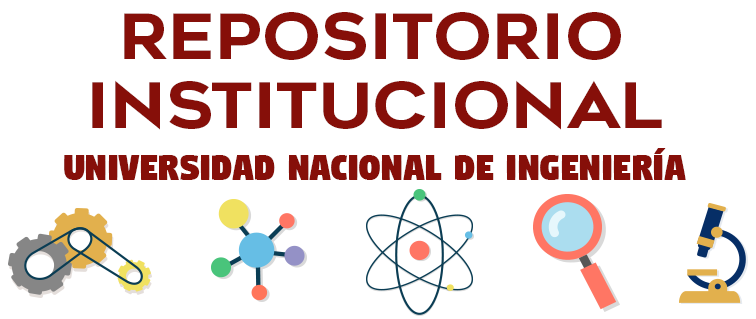Por favor, use este identificador para citar o enlazar este ítem:
http://hdl.handle.net/20.500.14076/27705Registro completo de metadatos
| Campo DC | Valor | Lengua/Idioma |
|---|---|---|
| dc.contributor.advisor | Valderrama Negrón, Ana Cecilia | - |
| dc.contributor.author | Taype Huanca, Kevin Ender | - |
| dc.creator | Taype Huanca, Kevin Ender | - |
| dc.date.accessioned | 2025-02-12T20:37:46Z | - |
| dc.date.available | 2025-02-12T20:37:46Z | - |
| dc.date.issued | 2024 | - |
| dc.identifier.uri | http://hdl.handle.net/20.500.14076/27705 | - |
| dc.description.abstract | La pandemia producida a finales del 2019 (COVID-19) causada por el virus SARS-CoV- 2 condujo a la búsqueda de potenciales inhibidores del SARS-CoV-2 para el tratamiento de la enfermedad. El objetivo principal de la presente tesis es el emplear técnicas in silico además de principios de Química Medicinal para diseñar complejos de Ga candidatos a inhibidores de la proteasa Mpro (blanco), proteína esencial en la replicación del virus. A partir de un inhibidor conocido (N3) de la proteasa Mpro (PDB ID 6LU7) se realizaron modificaciones estructurales empleando una lista de fragmentos bioisósteros, obteniéndose estructuras modificadas de N3 (ligandos), los que fueron prepararon en Google Colaboratory. Por otro lado, se preparó Mpro (ID 6W63) utilizando Chimera 1.15 para seguidamente ejecutar el virtual screening en una supercomputadora (MANATÍ). Se consiguieron acoplamientos con mayor afinidad, superiores a -9.0 kcal. mol-1 frente al control (-6,9 kcal. mol-1 para N3), posteriormente se ejecutó un virtual screening empleando un docking covalente y no covalente frente a Mpro (ID 6LU7). Los resultados muestran que las modificaciones estructurales satisfacen los objetivos, obteniendo 17 moléculas con buena puntuación de acoplamiento en el sitio activo de Mpro. Se coordinó con galio la molécula que presentó una mejor afinidad de acoplamiento (-11.592 kcal mol-1, Molécula1). Para realizar el docking de los complejos, se empleó el Fe en lugar del Ga, ya que no se obtenían los resultados esperados, se evaluó la regla de Lipinski, se analizaron los complejos, y finalmente se efectuaron las simulaciones de dinámica molecular. | es |
| dc.description.abstract | The pandemic produced at the end of 2019 (COVID-19) caused by the SARS-CoV-2 virus led to the search for potential SARS-CoV-2 inhibitors for the treatment of the disease. The main objective of this thesis is to use in silico techniques in addition to principles of Medicinal Chemistry to design Ga complexes that are candidates for inhibitors of the Mpro protease (target), an essential protein in virus replication. Starting from a known inhibitor (N3) of the Mpro protease (PDB ID 6LU7), structural modifications were made using a list of characteristic bioisostere fragments, obtaining modified structures of N3 (ligands), which were prepared in the Google Colaboratory. On the other hand, Mpro (ID 6W63) was prepared using Chimera 1.15 to then execute the virtual screening on a supercomputer (MANATÍ). Couplings with higher affinity, higher than -9.0 kcal. mol-1, were achieved compared to the control (-6.9 kcal. mol-1 for N3), subsequently a virtual screening was performed using a covalent and non-covalent docking against Mpro (ID 6LU7). The results show that the structural modifications satisfy the objectives, obtaining 17 molecules with a good coupling score in the active site of Mpro. The molecule that presented the best coupling affinity (-11.592 kcal mol-1, Molécula1) was coordinated with gallium. To carry out the docking of the complexes, Fe was used instead of Ga, since the expected results were not obtained, Lipinski's rule was then evaluated, the complexes were analyzed and finally the molecular dynamics simulations were carried out. | en |
| dc.description.uri | Tesis | es |
| dc.language.iso | spa | es |
| dc.publisher | Universidad Nacional de Ingeniería | es |
| dc.rights | info:eu-repo/semantics/openAccess | es |
| dc.rights.uri | http://creativecommons.org/licenses/by-nc-nd/4.0/ | es |
| dc.source | Universidad Nacional de Ingeniería | es |
| dc.source | Repositorio Institucional - UNI | es |
| dc.subject | Covid-19 | es |
| dc.subject | SARS-CoV-2 | es |
| dc.title | Estudio in Silico y diseño de complejos de Ga candidatos a inhibidores de la proteasa Mpro en SARS-CoV-2 | es |
| dc.type | info:eu-repo/semantics/bachelorThesis | es |
| thesis.degree.name | Licenciado en Química | es |
| thesis.degree.grantor | Universidad Nacional de Ingeniería. Facultad de Ciencias | es |
| thesis.degree.level | Título Profesional | es |
| thesis.degree.discipline | Química | es |
| thesis.degree.program | Licenciatura | es |
| renati.advisor.orcid | https://orcid.org/0000-0001-7741-3207 | es |
| renati.author.dni | 72789095 | - |
| renati.advisor.dni | 07263559 | - |
| renati.type | http://purl.org/pe-repo/renati/type#tesis | es |
| renati.level | http://purl.org/pe-repo/renati/nivel#tituloProfesional | es |
| renati.discipline | 531066 | - |
| renati.juror | López Pino, Patricia Rosario | - |
| renati.juror | Corzo Lucioni, Alberto | - |
| dc.publisher.country | PE | es |
| dc.subject.ocde | http://purl.org/pe-repo/ocde/ford#1.04.02 | es |
| Aparece en las colecciones: | Química | |
Ficheros en este ítem:
| Fichero | Descripción | Tamaño | Formato | |
|---|---|---|---|---|
| taype_hk.pdf | 8,2 MB | Adobe PDF | Visualizar/Abrir | |
| taype_hk(acta).pdf | 717,8 kB | Adobe PDF | Visualizar/Abrir | |
| carta_de_autorización.pdf | 1,46 MB | Adobe PDF | Visualizar/Abrir | |
| informe_de_similitud.pdf | 1,2 MB | Adobe PDF | Visualizar/Abrir |
Este ítem está sujeto a una licencia Creative Commons Licencia Creative Commons

Indexado por:



